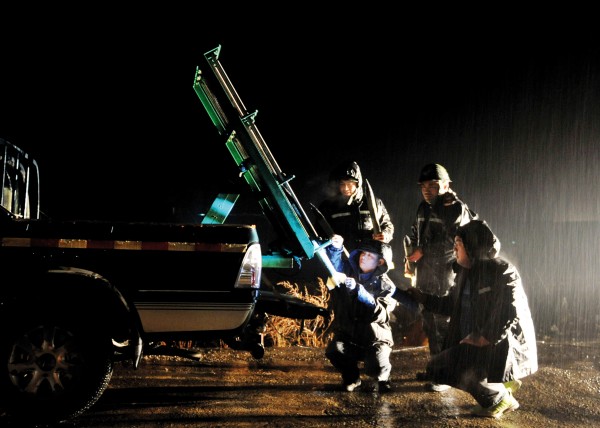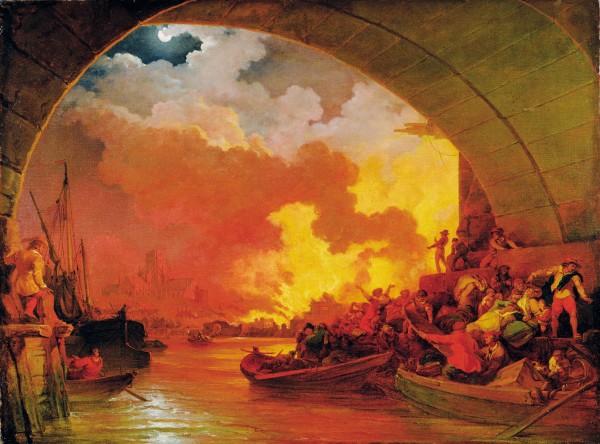Paekakariki’s deluge
On Friday October 3, a deepening low moved south-east across the Tasman Sea towards New Zealand. An extensive area of upward atmospheric motion ahead of the low created a broad, deep cloud sheet which unleashed heavy rain over most of the North Island and the top of the South Island, bringing rivers into flood and damaging roads with slips and washouts. In parts of the Tararua Range and on Mount Taranaki, over 300 mm of rain fell in 24 hours. The ranges of Nelson and Marlborough received around 100 mm.
On the Coromandel Peninsula, a car was carried hundreds of metres down a flooded stream when its driver attempted to cross a ford in the middle of the night. Two men in the car survived, but a young woman drowned.
The town worst affected by the downpour was Paekakariki, just north of Wellington, where rain released a massive landslide from a steep hill above the town. Tonnes of rock and mud buried cars and motel units to roof level as debris swept down over State Highway 1 and the main trunk railway line. One train driver, on finding his locomotive surrounded by flowing water, stopped and reversed back to the station.
Water dammed up behind the landslide, forming a large pond which flooded 21 houses and poured into the Paekakariki Hotel, where patrons were watching the NPC rugby match between Wellington and Otago. Mud blocked the door, so they had to escape through the windows.
State Highway 1 was blocked from Friday night to Saturday afternoon. Traffic backed up for kilometres in both directions, and many people had to spend the night in their cars.
The reason for the exceptionally heavy rain in the Paekakariki area was that a convergence zone developed in the lower atmosphere where northeast winds blowing down the coast from Paraparaumu met north-westerlies blowing across Cook Strait. What meteorologists call the “line of convergence” between these airstreams was oriented perpendicular to the coast and pointing at Paekakariki.
Cumulus clouds formed along the length of the convergence zone and showed up on the MetService radar as a line of strong echoes characteristic of heavy rain cells. These moved rapidly down the length of the zone under the influence of a deep northwest flow in the middle layers of the atmosphere. Because the zone was almost stationary for a time, the cells all tracked over the same place on the coast, a phenomenon US meteorologists call “train echoes.” As the cumulus clouds slammed into the steep hills behind Paekakariki, the air was forced rapidly upwards, which made the rain even heavier.
Most floods in New Zealand are caused by weather systems that bring relatively warm, moist air down to our latitudes from much further north. On this occasion, a ship in the Tasman Sea reported a temperature of 17º C in the airstream headed for the North Island. Since this air had a humidity of close to 100 per cent, it contained around 12 grams of water vapour per kilogram.
We tend to forget that air has mass, as it parts so effortlessly as we move through it, but the air in an average-sized house weighs about 400 kg. At 17º C and 100 per cent humidity, this much air would contain about 5 kg of water vapour, which, if it were all condensed, would make 5 litres of liquid.
As the humid air was lifted by the combined effects of the convergence zone and the hills, it experienced lower surrounding pressure, which caused it to expand. When any gas expands, its temperature falls. Since cold air is able to carry less water vapour than warm air, some vapour condenses, too, forming the liquid droplets that clouds and rain are made of. When this process is rapid, the rain becomes heavy.
Given the devastation that occurred at Paekakariki, it was lucky there were no deaths or serious injuries. However, the rain clouds may have played a role in the crash of a freight plane and the loss of its two pilots off the Kapiti Coast on the Friday night.
Among the hazards cumulus clouds present to aircraft are turbulence and icing. These clouds can contain water droplets with a temperature below zero. When the droplets touch the metal surface of an aircraft, they can freeze onto it, altering its aerodynamic properties and possibly jamming the plane’s controls. Whether or not these weather hazards were a factor in this crash remains to be explored by the accident investigators.
As the low moved away to the east of New Zealand, south-westerly winds blew cold air from over the Antarctic sea ice up and over the country. Snow fell to sea level in Otago and Southland, killing thousands of lambs. Icy conditions closed roads near Dunedin and Gore. The Desert Road was also closed after ice caused two accidents, and a few snow flurries were even seen in the hill suburbs of Wellington.
The heaviest snowfall was in the Catlins region of Otago, where snow accumulated to a depth of 15 cm in places. A rule of thumb for comparing snowfall to rainfall is that each centimetre of snow is equivalent to one millimetre of rain. Although this can vary depending on how slushy the snow is, it is clear that the precipitation in the cold south-westerlies was only a fraction of that which occurred over the North Island in the warmer north-westerlies.
One reason for this difference is that cold air contains much less water vapour than warm. Even at 100 per cent humidity, air with a temperature a couple of degrees above zero contains only about 4 grams of water vapour per kilogram—one third the amount in the air that headed for Paekakariki. Further, there were no slow-moving convergence lines focusing the precipitation in one spot over Otago. Rather, the showers were travelling fast, thereby spreading precipitation over a large area.
As with so many dramatic events in human history, the Paekakariki story has an unexpected twist. The rugby game being watched by patrons of the Paekak pub that fateful Friday included Christian Cullen, one of the finest fullbacks ever to pull on an All Black jersey, playing in what was likely to be his last home game for Wellington before leaving to play rugby in Ireland. Some said the rain that fell was the sky gods weeping to see the last of the player whose nickname is the “Paekakariki Express.”

















